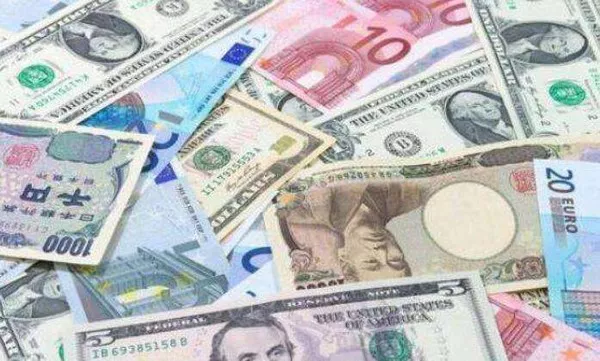Are you struggling to find a consistently profitable trading strategy?
Perhaps you won‘t be disappointed by the trading strategy presented here — combining MACD divergence with a double top and double bottom pattern to create large profit potential opportunities.
If you are interested in band trading, then this trading strategy is worth exploring further.
MACD divergence and double-top double-bottom patterns have great potential because they allow you to catch major trend reversals.
This strategy also needs to be used in conjunction with the size time period chart.
The basis of this strategy is the double top/double bottom signal, which in turn takes advantage of different cycles in the market driven by professional investment money.
If you are new to trading, the first thing you need to know is that the market goes through the following cycles: 1.
The following double top and double bottom indicator signals can be recognized by the following figures. The following patterns are variously called double top and double bottom false breakout by most people. The two charts below show how the reverse pattern develops.
The chart also shows false breaks and how indicators trigger entry signals before a trend reversal: As you can see from the two charts above, prices tend to reach a lower/higher position before the reversal begins, and this is done by professional investment funds that squeeze the average investor’s position and lead us to believe that the trend will continue.
If your stop-loss triggers at this point and you get out of the market, then you have to watch the price reverse.
So it’s important to learn more about this pattern of reversal and how to continue to make money at this time.
How do professional money cheat retail traders, and how do you find the upside?
The first thing to know is what is specialist money (institutional money), which is usually used to refer to market makers, or large institutional banks.
While retail traders are shorting near a certain price peak, professional money may be going long in reverse.
Retail traders expect new trends to form, while professional money may be the opposite.
The following two charts show the direction of the trade in the trend market from the perspective of professional money: for example, the bearish trend on the left, retail traders usually sell, professional money chooses to go long.
As long positions build up, the average market price is well above the actual price (green horizontal line), which means that professional money is in the red.
The same is true on the right side of the uptrend, where short positions held by professional money are much worse than the average real price.
Note that professional funds are the largest players in the market, and large trading volumes can have a significant impact on market prices.
They can change the direction of market trends by pushing prices, and in doing so they themselves remove the risk from their positions.
Liquidity rises when prices reach new highs or new lows, and specialist money can use these high liquidity levels to get a better average price, so they need to push prices towards these levels.
The following two charts show how professional money pushes the price change to bring the position closer to the actual price: The professional money repositions, further reversing the direction of the price change, and the chart may show patterns such as the pin bar or other reversing candlestick.
At this point, a double top or double bottom becomes apparent and traders begin to decide to sell their positions, thus breaking the neck line and triggering an entry signal for the indicator.
How to choose the signals with high profit potential?
My experience has been that trading with a combination of 30-minute and 1-hour time periods is more likely to be successful.
These two time charts can be used together to provide a better signal and can be used with a double top or double bottom indicator.
For example, MACD is used in the bullish divergence interval in the following figure. The green matrix marks the divergence in the 4-hour chart, which forms a double bottom pattern and finally an upward trend: the double-top pattern is similar, and the red matrix marks the divergence in the 4-hour chart, forming a double top pattern:
The bigger picture is the huge monetization opportunity to actually test the chart applications mentioned above.
The 4-hour chart below shows a bullish divergence following a downtrend in prices.
Notice where the green marks are: below is a double top signal on the 30-minute chart at the departure point of the 4-hour chart: This double bottom signal, coupled with an entry signal, such as a neck line break, can give you a 17x earnings return, or a 34% return for 2% risk.
I really recommend that you try to trade a double top or double bottom.
It’s just a matter of waiting for those signals to form before they do.




























